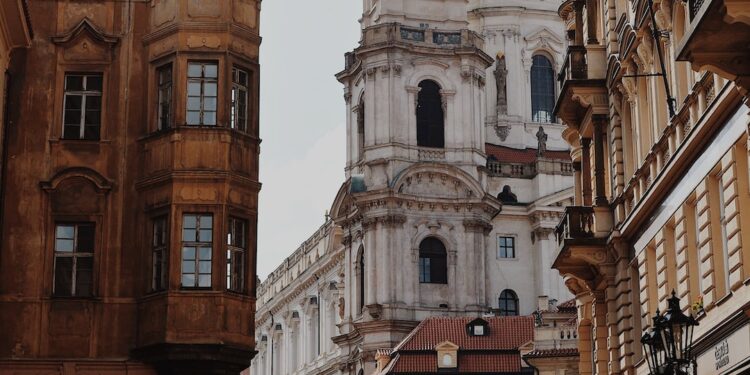Prague, the capital city of the Czech Republic, is renowned for its stunning architecture that spans many centuries and styles. From Baroque to Gothic, Art Nouveau to Renaissance, the city is a treasure trove of architectural marvels waiting to be discovered. In this blog post, we will embark on a journey through Prague’s architectural history, exploring some of its most magnificent buildings and structures.
Our exploration starts with Prague Castle, the largest ancient castle complex in the world. Perched atop a hill overlooking the city, this architectural masterpiece showcases a diverse range of styles that have evolved over the course of centuries. The Gothic style is prominent in the stunning St. Vitus Cathedral, with its soaring vaulted ceilings and intricate stained glass windows. Moving on to the Royal Palace, we encounter a unique blend of Gothic and Renaissance elements, while the charming Golden Lane transports us back in time with its preserved medieval houses.
A short distance from Prague Castle lies Charles Bridge, an iconic symbol of Prague. This picturesque bridge, adorned with Baroque statues, connects the Old Town with the Lesser Town. Walking across this historic bridge, one cannot help but be captivated by its enchanting views of the Vltava River and the charming red rooftops of the city.
As we make our way to the Old Town Square, one cannot miss the grandeur of the Old Town Hall. Its stunning Gothic tower, adorned with intricate astronomical clocks, is a testament to the city’s rich history. The square itself is a bustling hub, surrounded by impressive buildings such as the Church of Our Lady before Týn, with its distinctive twin spires, and the St. Nicholas Church, an exquisite example of Baroque architecture.
Moving towards the New Town, we encounter another architectural jewel, the Municipal House. This Art Nouveau masterpiece is a celebration of elegance and opulence, with its intricate mosaics, stained glass windows, and magnificent concert halls. It stands as a testament to the vibrant artistic and cultural scene of Prague at the turn of the 20th century.
Continuing our journey, we reach the Dancing House, a modern architectural wonder that stands in stark contrast to the city’s historic buildings. Designed by Frank Gehry, this unique structure is said to symbolize a man and a woman engaged in a dance. Its unconventional design has attracted both praise and controversy, making it a must-visit for architecture enthusiasts.
For those seeking a glimpse into Prague’s communist past, a visit to the Žižkov Television Tower is a must. The tower, one of the city’s most recognizable landmarks, is adorned with unusual sculptures of crawling babies, created by Czech artist David Černý. Boasting panoramic views of the city, the tower offers a unique vantage point to observe Prague’s architectural tapestry.
No exploration of Prague’s architectural marvels would be complete without a visit to the Josefov district. This Jewish quarter is home to the hauntingly beautiful Old Jewish Cemetery, with its tightly packed tombstones and layers of history. The stunning Spanish Synagogue, a Moorish Revival gem, is another highlight of this area.
In conclusion, Prague’s architectural marvels are a testament to the city’s rich and diverse history. From medieval castles to Gothic cathedrals, Baroque squares to Art Nouveau gems, the city offers a unique blend of architectural styles. Whether you are an architecture enthusiast or simply a curious traveler, exploring Prague’s architectural heritage is a journey that will leave you in awe of the city’s enduring beauty and timeless charm.















